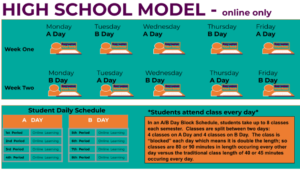Six Key Components of Effective Online Instruction

By Carol A. Ribeiro
I was recently reminded that almost ALL instruction today has an online component. I was speaking with a colleague who decided to tackle what I would consider to be a complex plumbing project at home simply by reviewing online “how to” videos. She had no plumbing experience, and yet she was able to discover the tools and techniques she needed online, learn from experts and solve her problem while gaining real-world experience (all without flooding her kitchen).
In the last 20 years–17 of which I’ve worked at the non-profit The Virtual High School–I’ve seen education, and the ways in which our students gather information, dramatically change. Informal learning has certainly grown by leaps and bounds through the use of online education and online resources in many forms. Our challenge as educators is to leverage our students’ desires and preferences to use online education while advancing their learning. With the flood of information available, what does practical and effective online instruction even look like?
In my experience the best online instruction has the following six key components:
Clear Expectations
Students need to understand WHY. Why are they completing this lesson? Why will this be valuable to them in the future? “Because I said so” just doesn’t work with today’s students. Even though we require them to do so, not all students have a burning desire to take science, learn algebra or study history. A quality online lesson clearly outlines the goals of each lesson, expected learning outcomes, and why this science, algebra or social studies activity is helpful in the real world.
Concise Instructions
Students need to understand HOW. How should this lesson be completed and how will they know when it is done? How many points is this worth if it is for credit? Is there a standard rubric for submission? Ideally, if this is a complete online course, lesson overviews should be consistent from module to module so students can become familiar with the course format and learn to better track their work over time.
Engaging, Robust Content
Information is everywhere. Videos and sound bites are the rule, not the exception. Online instruction must be able to capture a student’s interest and convey concepts using tools that are engaging and easy to use, but ultimately content is key. Tools should not be used unless they are delivering educationally sound, standards-based curriculum at the correct academic level for the students being served. I believe we must reach higher to achieve our fullest potential.
Guidance and Support
Guidance and support includes technical support and access to online help, as well as face-to-face oversight and support. We all know middle and high school students are still developing time management and other organizational strategies. Having a responsible adult available to assist with logistics in addition to the online instructor can be the difference between learning and failure. Sometimes this additional support can be a subject matter expert, but often just having an extra paraprofessional resource monitoring student work will help keep students on track.
Quality Feedback
Quality feedback addresses not only the type of feedback a student receives, but also the frequency. A student must know that although their online teacher is not physically present, they are available and paying attention to them. Sincere, thoughtful feedback on student discussions–not just on graded assignments–can help build a sense of community in an online classroom and ultimately advance student understanding of course concepts.
Expert Educators
WHO is delivering the online instruction? Does the student have frequent access to the course instructor? Is the instructor readily available both in the classroom space and on an individual basis? An experienced educator who is a subject matter expert and has completed training in effective online education techniques is key to facilitating student understanding of course material. Ideally each student should have a private one-on-one communication area with their online teacher in case there are issues or grading questions that cannot be addressed in a public forum.
Over time our educator voices will continue to be valuable, but our educational approaches will change–fewer lectures, more guidance on the side. Students should be encouraged to become “teachers” themselves–to learn with and from their peers. Learning this way helps students thrive in workplaces where collaboration and group work are the norm.
It is time to bring our students’ desire to learn online and from one another from their home environments into our classroom spaces. Expert educators can serve to expand students’ learning, challenge their assumptions and help their understanding of material concepts grow. We can help them curate information, conduct better research and collaborate. And, like our students, we can use quality online instruction to advance our educational goals.
For more, see:
- 10 Ways to Use Quality Digital Curriculum
- Why Do Students Choose Online and Blended Schools?
- Closing the Last Mile of Career Opportunity in Rural America
Carol A. Ribeiro is President & CEO of The Virtual High School. Follow them on Twitter: @goVHS
Stay in-the-know with all things EdTech and innovations in learning by signing up to receive the weekly Smart Update.




0 Comments
Leave a Comment
Your email address will not be published. All fields are required.